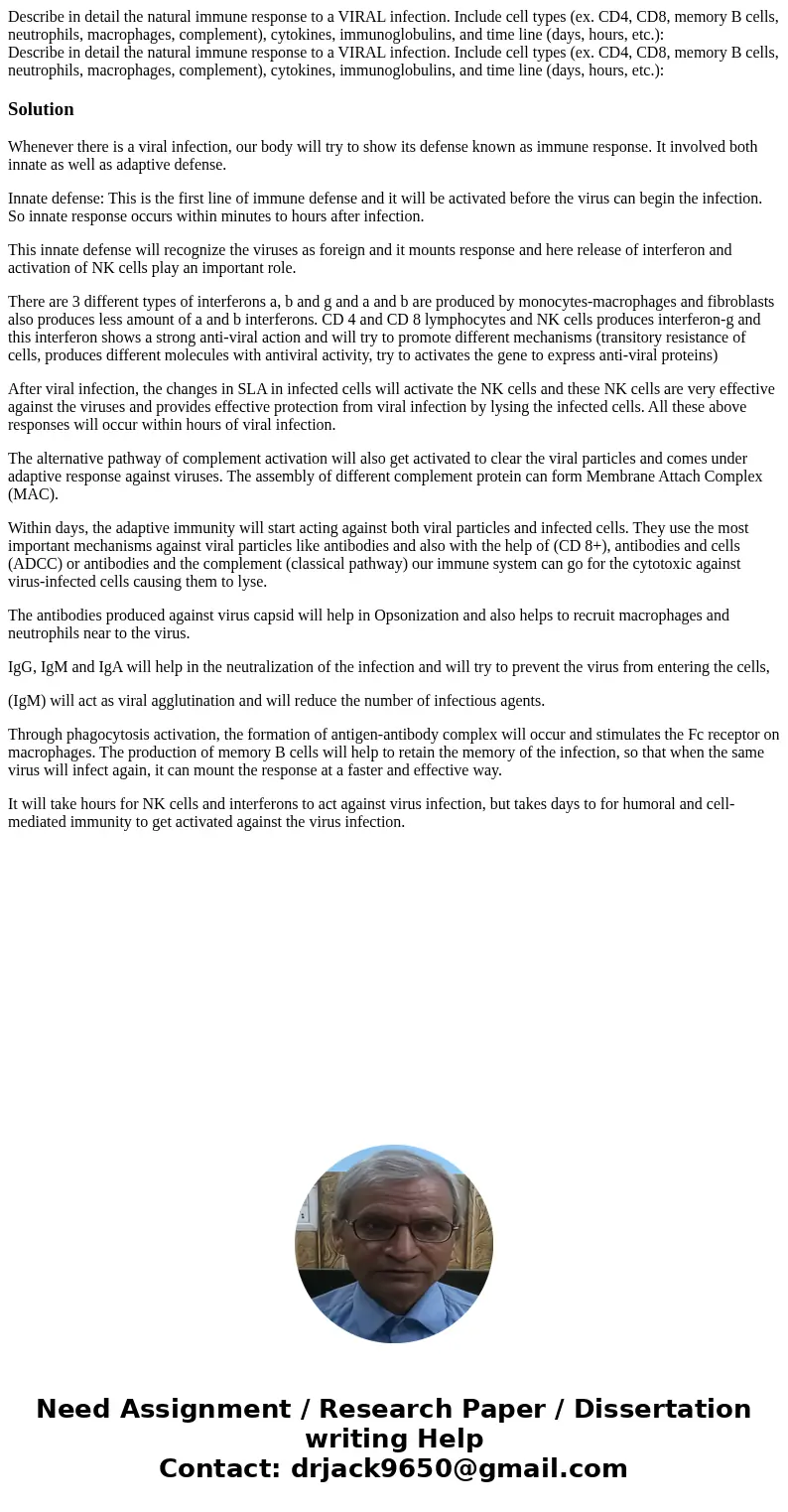Describe in detail the natural immune response to a VIRAL in
Solution
Whenever there is a viral infection, our body will try to show its defense known as immune response. It involved both innate as well as adaptive defense.
Innate defense: This is the first line of immune defense and it will be activated before the virus can begin the infection. So innate response occurs within minutes to hours after infection.
This innate defense will recognize the viruses as foreign and it mounts response and here release of interferon and activation of NK cells play an important role.
There are 3 different types of interferons a, b and g and a and b are produced by monocytes-macrophages and fibroblasts also produces less amount of a and b interferons. CD 4 and CD 8 lymphocytes and NK cells produces interferon-g and this interferon shows a strong anti-viral action and will try to promote different mechanisms (transitory resistance of cells, produces different molecules with antiviral activity, try to activates the gene to express anti-viral proteins)
After viral infection, the changes in SLA in infected cells will activate the NK cells and these NK cells are very effective against the viruses and provides effective protection from viral infection by lysing the infected cells. All these above responses will occur within hours of viral infection.
The alternative pathway of complement activation will also get activated to clear the viral particles and comes under adaptive response against viruses. The assembly of different complement protein can form Membrane Attach Complex (MAC).
Within days, the adaptive immunity will start acting against both viral particles and infected cells. They use the most important mechanisms against viral particles like antibodies and also with the help of (CD 8+), antibodies and cells (ADCC) or antibodies and the complement (classical pathway) our immune system can go for the cytotoxic against virus-infected cells causing them to lyse.
The antibodies produced against virus capsid will help in Opsonization and also helps to recruit macrophages and neutrophils near to the virus.
IgG, IgM and IgA will help in the neutralization of the infection and will try to prevent the virus from entering the cells,
(IgM) will act as viral agglutination and will reduce the number of infectious agents.
Through phagocytosis activation, the formation of antigen-antibody complex will occur and stimulates the Fc receptor on macrophages. The production of memory B cells will help to retain the memory of the infection, so that when the same virus will infect again, it can mount the response at a faster and effective way.
It will take hours for NK cells and interferons to act against virus infection, but takes days to for humoral and cell-mediated immunity to get activated against the virus infection.

 Homework Sourse
Homework Sourse